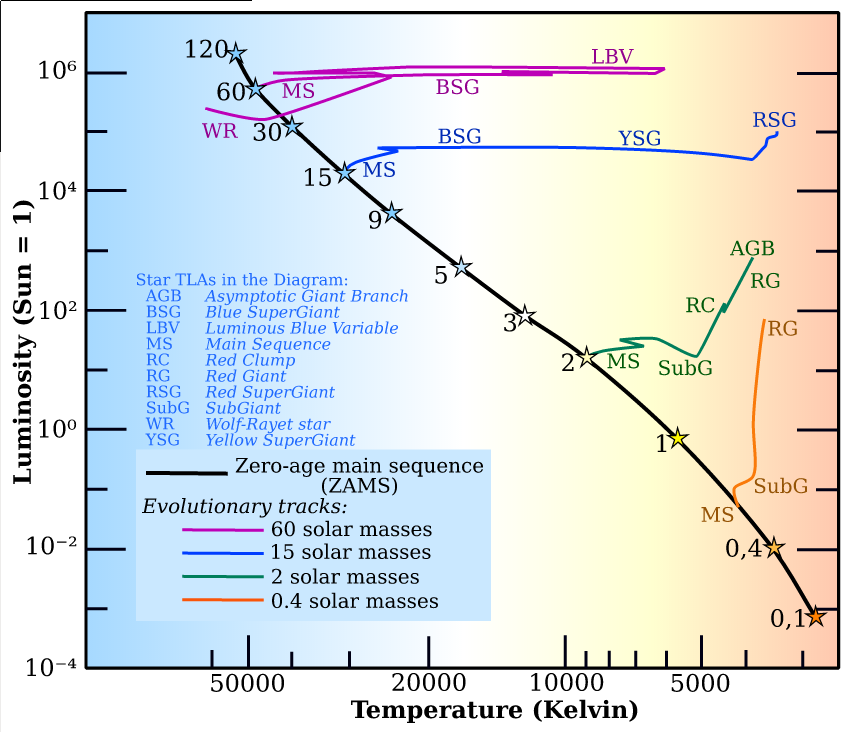Evolved Stars
As heavier elements are fused within the core of a star, it advances to later evolutionary stages. At Leeds we are interested in the most massive stars which will go on to make a spectacular exit in the final throes of their life as supernovae (SNe). Massive stars play a vital role in the evolution of the galaxy due to the SNe explosions and mass-loss processes during the stars' lifetime that enable the chemical enrichment of the ISM. The powerful winds and outflows from evolved massive stars make them an excellent laboratory for the physics of shocks and collisions as is shown in the Stellar Winds, Galactic Superwinds & Shocks section.
The late evolution of massive stars remains poorly understood however. Massive stars are rare and so are likely to be found much
further away from us and this means in order to study them in-depth we need facilities that can provide observations of high sensitivity and resolution. Furthermore the late stages of evolution in massive stars are rather short-lived and as a result this stages are difficult to observe.

Image: Jesusmaiz - Own work, CC BY 2.5,
commons.wikimedia.org/w/index.php?curid=2097574
Leeds researchers take an interest in an unusual class of star; the yellow hypergiants that suffers from these very issues. Yellow hypergiants are characterised by intense mass-loss, a 1a+ luminosity class and Hα emission and absoption lines that are much broader than those of 1a SGs of a similar spectral type. These observed properties correspond to physical interpretation; that these objects evolve according to a 'blueward loop' on a HR diagram where the temperature of the star varies whilst the luminosity remains fairly constant (See Image). So YHGs may well go on to a phase as a luminous blue variable before becoming a Wolf Rayet star.
Leeds researchers collaborate with groups from around the world in trying to identify members of this rare YHG class. We do this using mm and optical spectroscopy to detect reliable tracers in the gas, the species that are found and their relative abundances give us information that can be used to classify the star. An example of one of these objects is IRAS 17163-3907, better known as the 'Fried Egg Nebula'.

Image credit: Lagadec, E. et al. 2011, A&A, 534, L10
The complexity in the classification of massive stars can be compounded further when objects exhibit what is known as the B[e] phenomena, where a star has strong balmer emission lines, a combination of permitted and forbidden lines in the optical and a strong near- or mid-IR excess as a result of hot circumstellar dust. Researchers at Leeds are interested in supergiant B[e] (sgB[e]) stars, but the B[e] criteria can be met by stars of various evolutionary phases including compact planetary nebulae, symbiotic binaries and pre-MS Herbig stars. Correctly classifying the object can be achieved through studies of the parent cluster and comparisons with other B[e] objects, but constraining the history or indeed the future development of a star remains a challenge.
